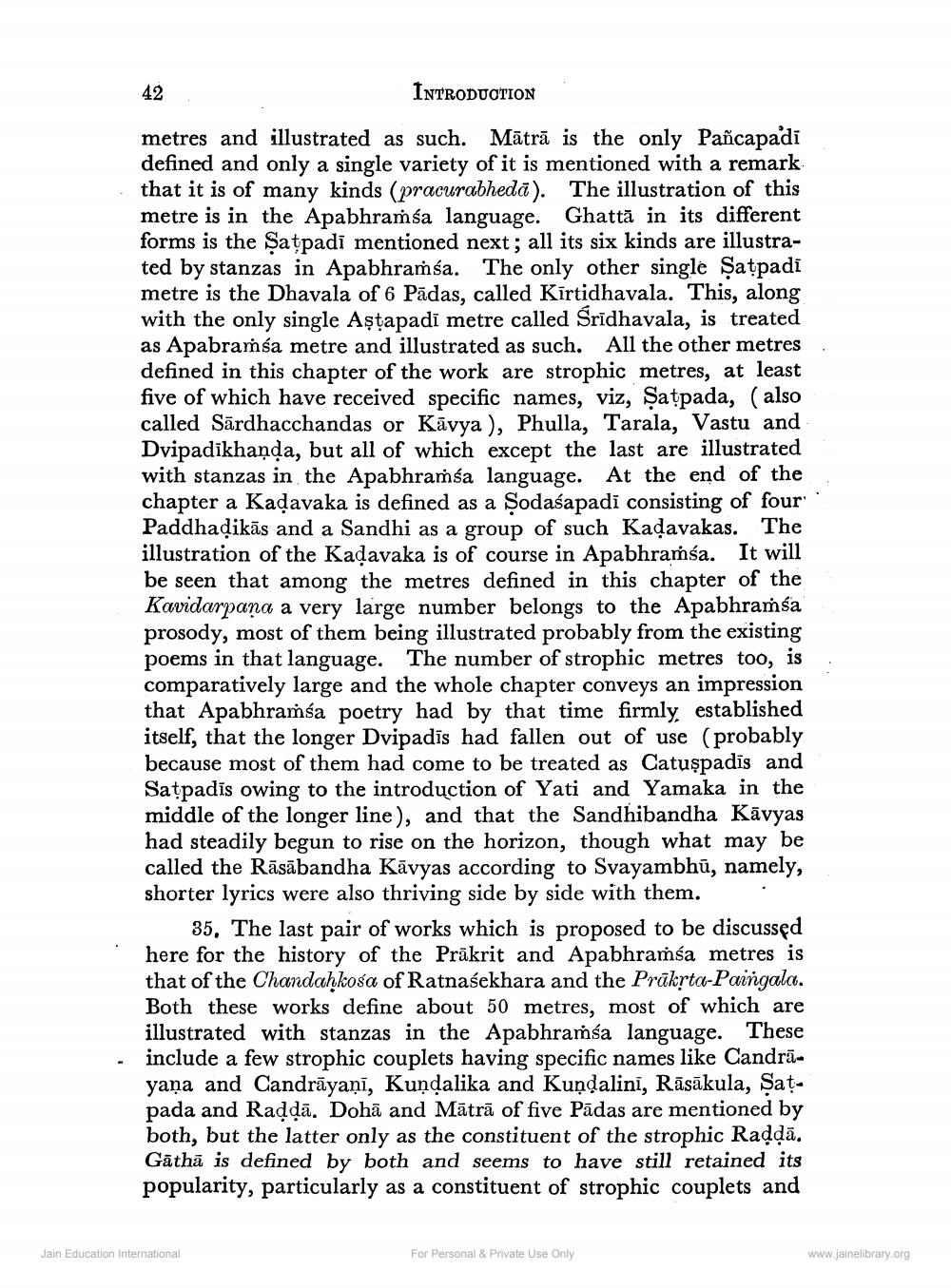________________
42
INTRODUCTION
metres and illustrated as such. Mātrā is the only Pañcapadi defined and only a single variety of it is mentioned with a remark that it is of many kinds (pracurabhedā). The illustration of this metre is in the Apabhraṁsa language. Ghattā in its different forms is the Satpadi mentioned next; all its six kinds are illustrated by stanzas in Apabhraṁśa. The only other single Șatpadi metre is the Dhavala of 6 Pādas, called Kirtidhavala. This, along with the only single Aştapadi metre called Srīdhavala, is treated as Apabramsa metre and illustrated as such. All the other metres defined in this chapter of the work are strophic metres, at least five of which have received specific names, viz, Şatpada, (also called Sārdhacchandas or Kāvya ), Phulla, Tarala, Vastu and Dvipadīkhanda, but all of which except the last are illustrated with stanzas in the Apabhraíśa language. At the end of the chapter a Kadavaka is defined as a Sodaśapadi consisting of four. Paddhadikās and a Sandhi as a group of such Kadavakas. The illustration of the Kadavaka is of course in Apabhraṁsa. It will be seen that among the metres defined in this chapter of the Kavidarpana a very large number belongs to the Apabhramsa prosody, most of them being illustrated probably from the existing poems in that language. The number of strophic metres too, is comparatively large and the whole chapter conveys an impression that Apabhraṁsa poetry had by that time firmly established itself, that the longer Dvipadīs had fallen out of use (probably because most of them had come to be treated as Catuşpadīs and Satpadīs owing to the introduction of Yati and Yamaka in the middle of the longer line), and that the Sandhibandha Kāvyas had steadily begun to rise on the horizon, though what may be called the Rāsābandha Kāvyas according to Svayambhū, namely, shorter lyrics were also thriving side by side with them.
35, The last pair of works which is proposed to be discussed here for the history of the Prākrit and Apabhraíśa metres is that of the Chandahkosa of Ratnasekhara and the Prākrta-Paingala. Both these works define about 50 metres, most of which are illustrated with stanzas in the Apabhramsa language. These include a few strophic couplets having specific names like Candrāyaņa and Candrāyaṇī, Kundalika and Kuņqalini, Rāsākula, Sat. pada and Raddā. Dohā and Mātrā of five Pādas are mentioned by both, but the latter only as the constituent of the strophic Raddā. Gāthā is defined by both and seems to have still retained its popularity, particularly as a constituent of strophic couplets and
Jain Education International
For Personal & Private Use Only
www.jainelibrary.org




